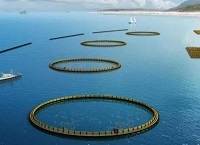Mao Xiaohong, Chen Peng, Cao Changdai, Bai Tingting, Zhang Xiuxia, Zhang Ansheng
In order to screen out the synergistic tank mixtures that have a synergistic effect on the control of Bemisia tabaci Gennadius and Myzus persicae Sulzer, the leaf dip method was used to determine the co-toxicity of rotenone with clothianidin, thiacloprid and thiamethoxam. The tank mixtures with better effect were screened through the co-toxicity coefficient, and then the field efficacy test on Bemisia tabaci Gennadius and Myzus persicae Sulzer was carried out. The results showed that 12 groups of tank mixtures had a synergistic effect on Bemisia tabaci Gennadius and 6 groups of tank mixtures had a synergistic effect on Myzus persicae Sulzer. Among them, 5 groups of tank mixtures have synergistic effects on both Bemisia tabaci Gennadius and Myzus persicae Sulzer. When rotenone and clothianidin were proportioned according to the active ingredients of 3:20, 14:25 and 13:25, and rotenone and thiamethoxam were proportioned according to the active ingredients of 63:10 and 133:1, all combinations had synergistic effects on Bemisia tabaci Gennadius and Myzus persicae Sulzer. Field efficacy test results showed that the control effects of the tank mixtures of 6% rotenone microemulsion with 20% clothianidin suspension on Bemisia tabaci Gennadius and Myzus persicae Sulzer were 70%, 90%, 92%, 88% at 1, 3, 7 and 10 days after treatment respectively. The control effects of the tank mixtures of 6% rotenone microemulsion with 25% thiamethoxam water dispersible granules on Bemisia tabaci Gennadius and Myzus persicae Sulzer reached 74%, 86%, 91%, and 90% at 1, 3, 7 and 10 days after treatment respectively. The quick-acting effect was better than the control effect of 6% rotenone microemulsion, and the lasting effect was better than the control effect of chemical pesticides. Rotenone and 3 kinds of neonicotinoid insecticides have a significant synergistic effect in tank mixtures, and the study could provide a theoretical basis for the field pesticide reduction control of Bemisia tabaci Gennadius and Myzus persicae Sulzer.
